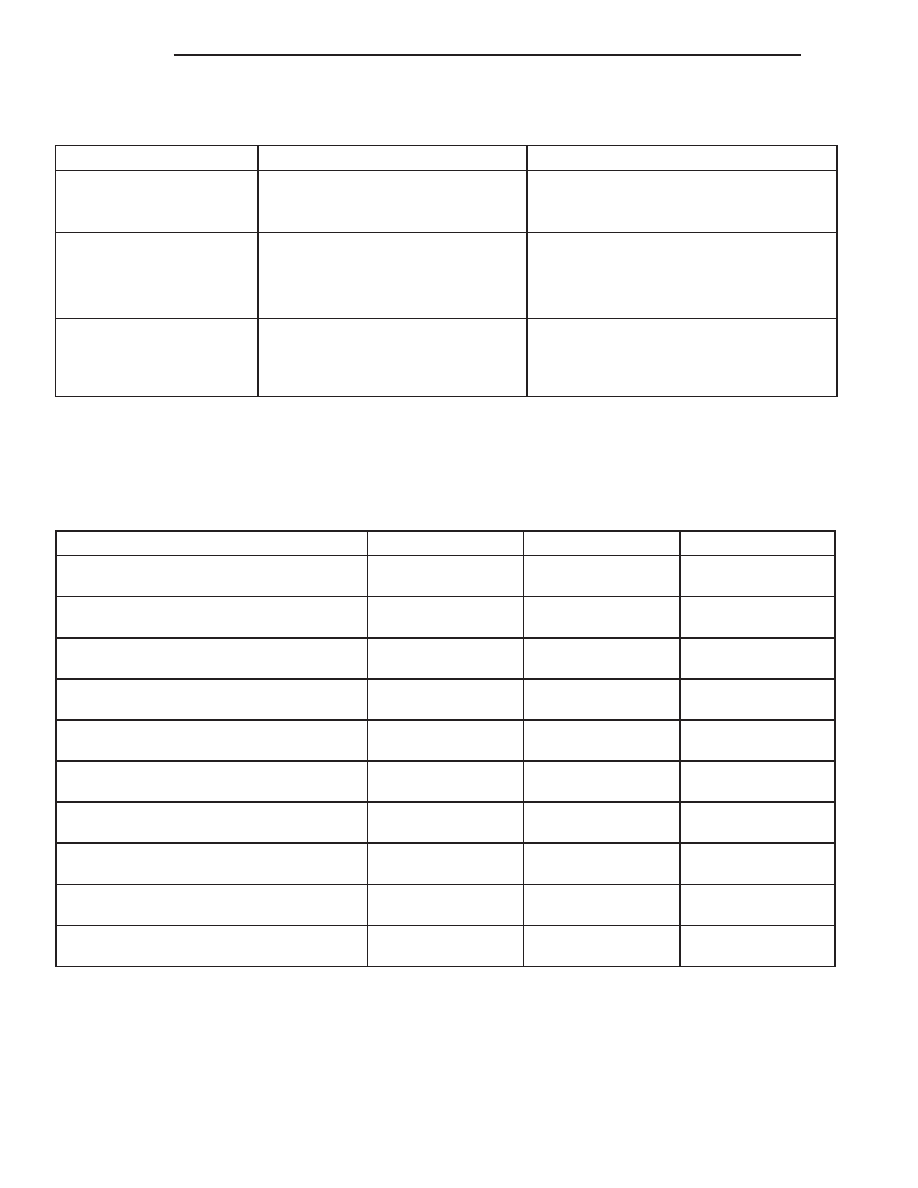Dodge Dakota (R1). Manual - part 193

SPRING AND SHOCK ABSORBER
CONDITION
POSSIBLE CAUSES
CORRECTION
SPRING SAGS
1. Broken leaf.
1. Replace spring.
2. Spring fatigue.
2. Replace spring.
SPRING NOISE
1. Loose spring clamp bolts.
1. Tighten to specification.
2. Worn bushings.
2. Replace bushings.
3. Worn or missing spring tip inserts.
3. Replace spring tip inserts.
SHOCK NOISE
1. Loose mounting fastener.
1. Tighten to specification.
2. Worn bushings.
2. Replace shock.
3. Leaking shock.
3. Replace shock.
SPECIFICATIONS
TORQUE CHART
TORQUE SPECIFICATIONS
DESCRIPTION
N·m
Ft. Lbs.
In. Lbs.
Shock Absorber
Lower Bolt
95
70
—
Shock Absorber
Upper Bolt
95
70
—
Stabilizer Bar
Frame Bracket Nuts
54
40
—
Stabilizer Bar
Link Nuts
54
40
—
Stabilizer Bar
Retainer Bolts
54
40
—
Spring U-Bolt Nuts
2WD
149
110
—
Spring U-Bolt Nuts
4WD
149
110
—
Spring
Eye Nut
163
120
—
Spring
Shackle Nuts
163
120
—
Jounce Bumper
Bolts
61
45
—
SHOCK
DESCRIPTION
The top of the shock absorbers are bolted to the
body crossmember. The bottom of the shocks are
bolted to the axle brackets. The axle brackets are
staggered one ahead of the axle and one befind.
OPERATION
Ride control is accomplished through the use of
dual-action shock absorbers. The shocks dampen the
jounce and rebound as the vehicle travels over vari-
ous road conditions.
2 - 26
REAR
AN
REAR (Continued)